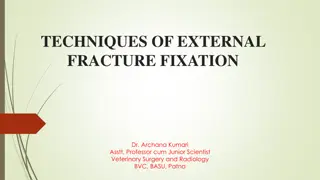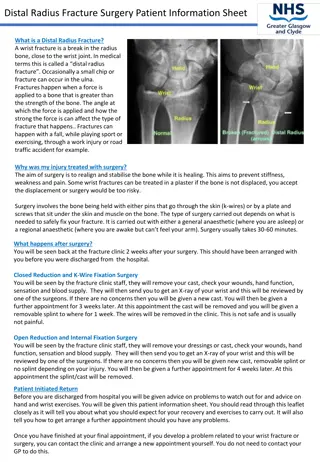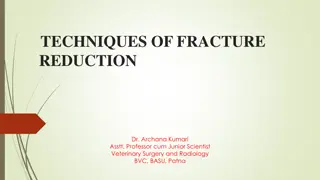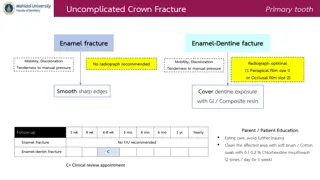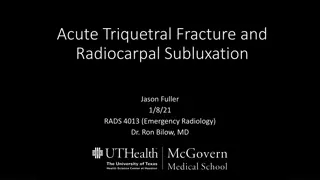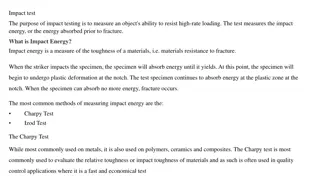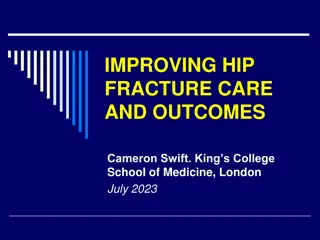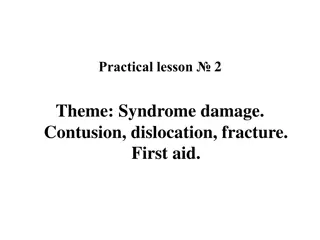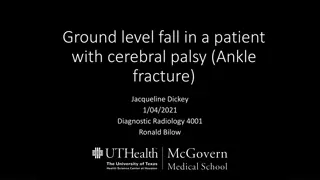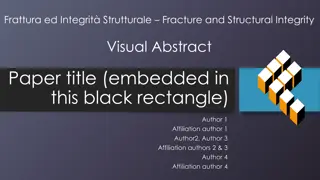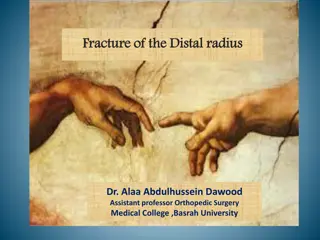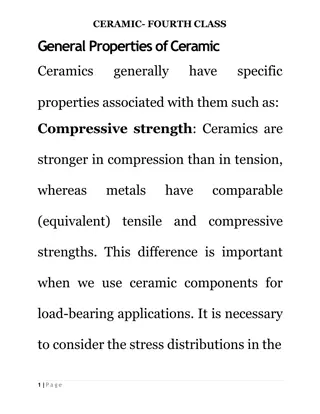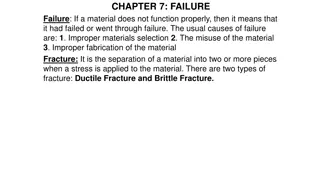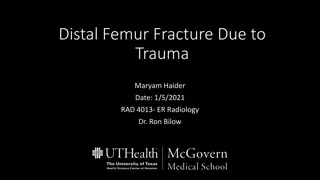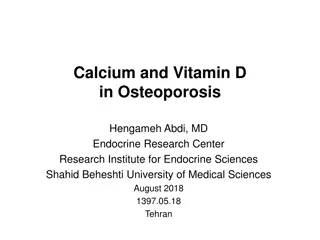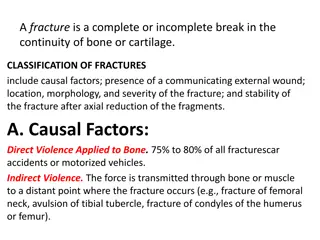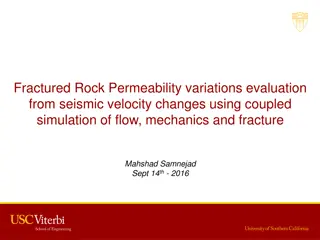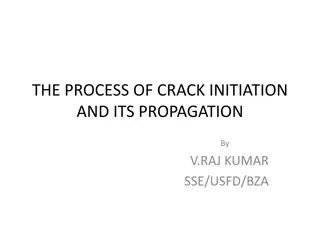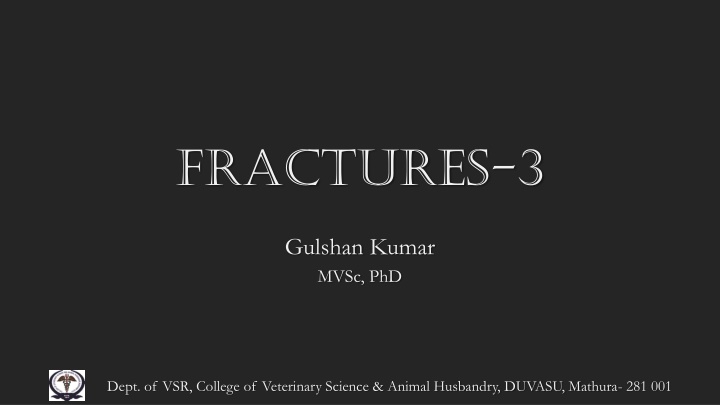
Fracture Management Principles and Considerations
Fractures are common in veterinary practice and require diligent examination, clinical diagnosis, and radiographic assessment. Understanding the principles of fracture treatment is essential for successful outcomes. This comprehensive guide covers primary and secondary considerations in fracture management, clinical diagnosis, radiographic examination, and principles of fracture treatment to ensure proper care and restoration of function in animals.
Download Presentation

Please find below an Image/Link to download the presentation.
The content on the website is provided AS IS for your information and personal use only. It may not be sold, licensed, or shared on other websites without obtaining consent from the author. If you encounter any issues during the download, it is possible that the publisher has removed the file from their server.
You are allowed to download the files provided on this website for personal or commercial use, subject to the condition that they are used lawfully. All files are the property of their respective owners.
The content on the website is provided AS IS for your information and personal use only. It may not be sold, licensed, or shared on other websites without obtaining consent from the author.
E N D
Presentation Transcript
Fractures-3 Gulshan Kumar MVSc, PhD Dept. of VSR, College of Veterinary Science & Animal Husbandry, DUVASU, Mathura- 281 001
Principles of management Dept. of VSR, College of Veterinary Science & Animal Husbandry, DUVASU, Mathura- 281 001
considerations Primary consideration Preservation of life: Treatment for shock, haemorrhage Secondary considerations Repair of tissue Restoration of function Dept. of VSR, College of Veterinary Science & Animal Husbandry, DUVASU, Mathura- 281 001
examiation Primary consideration Assessment of general health of the animal Adjacent tissue damage and its extent Precise evaluation of the fracture(s) Dept. of VSR, College of Veterinary Science & Animal Husbandry, DUVASU, Mathura- 281 001
Clinical diagnosis of fracture history of trauma ..signs and symptoms Pain & tenderness Swelling (may be immediate or appear several days later Deformity/change in angulation Crepitus Loss of function Dept. of VSR, College of Veterinary Science & Animal Husbandry, DUVASU, Mathura- 281 001
Radiographic examination Positioning Two orthogonal views To decide on best procedure for reduction and immobilization Dept. of VSR, College of Veterinary Science & Animal Husbandry, DUVASU, Mathura- 281 001
Radiographic examination Positioning Two orthogonal views To decide on best procedure for reduction and immobilization Radiographs of the opposite limbs are useful (young animals) Dept. of VSR, College of Veterinary Science & Animal Husbandry, DUVASU, Mathura- 281 001
Principles of fracture treatment Anatomical reduction Stable fixation Preservation of blood supply Early, active pain-free mobilization of muscles and adjacent joints Dept. of VSR, College of Veterinary Science & Animal Husbandry, DUVASU, Mathura- 281 001
reduction Closed reduction Most useful below the elbow and stifle, (less tissue, no hinderance of soft tissue Small and relatively long legged animals By traction and counter traction & manipulation Dept. of VSR, College of Veterinary Science & Animal Husbandry, DUVASU, Mathura- 281 001
reduction Closed reduction By traction and counter traction & toggling Skeletal traction (not common in veterinary practice) Use of gravity Dept. of VSR, College of Veterinary Science & Animal Husbandry, DUVASU, Mathura- 281 001
reduction Open reduction Method of choice in many Fractures Used in unstable fractures, Several day old fractures Those with joint involvement Dept. of VSR, College of Veterinary Science & Animal Husbandry, DUVASU, Mathura- 281 001
reduction Open reduction By levering By force using bone forceps, Combination of the two Dept. of VSR, College of Veterinary Science & Animal Husbandry, DUVASU, Mathura- 281 001
The techniques Closed reduction and immobilization Casts and splints POP, Fibre glass Thomas, Meta Dept. of VSR, College of Veterinary Science & Animal Husbandry, DUVASU, Mathura- 281 001
The techniques Closed reduction and internal fixation (CRIF) Closed reduction and external fixation Open reduction and internal fixation Intra-medullary extramedullary Dept. of VSR, College of Veterinary Science & Animal Husbandry, DUVASU, Mathura- 281 001

